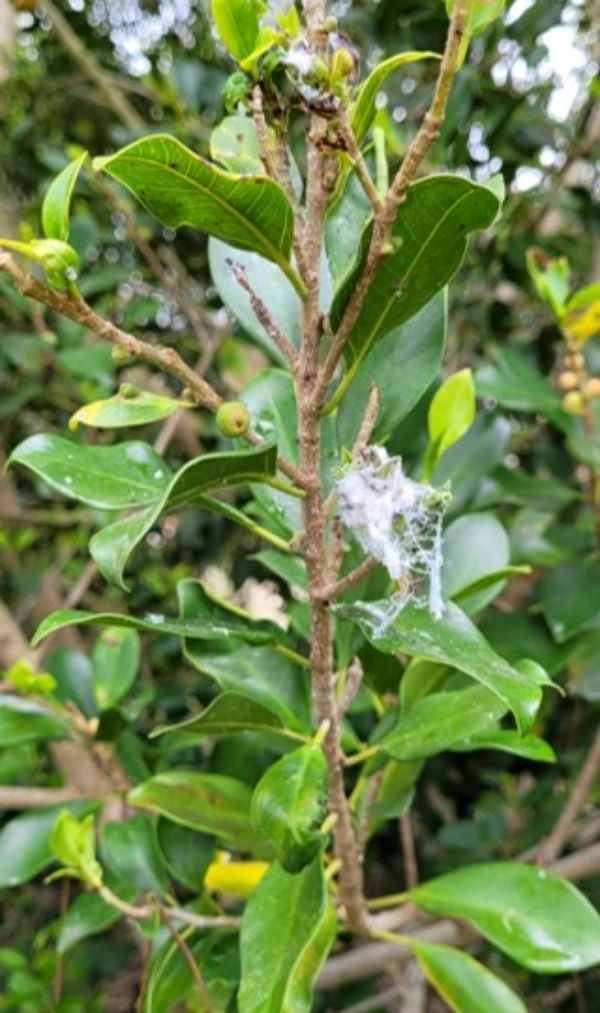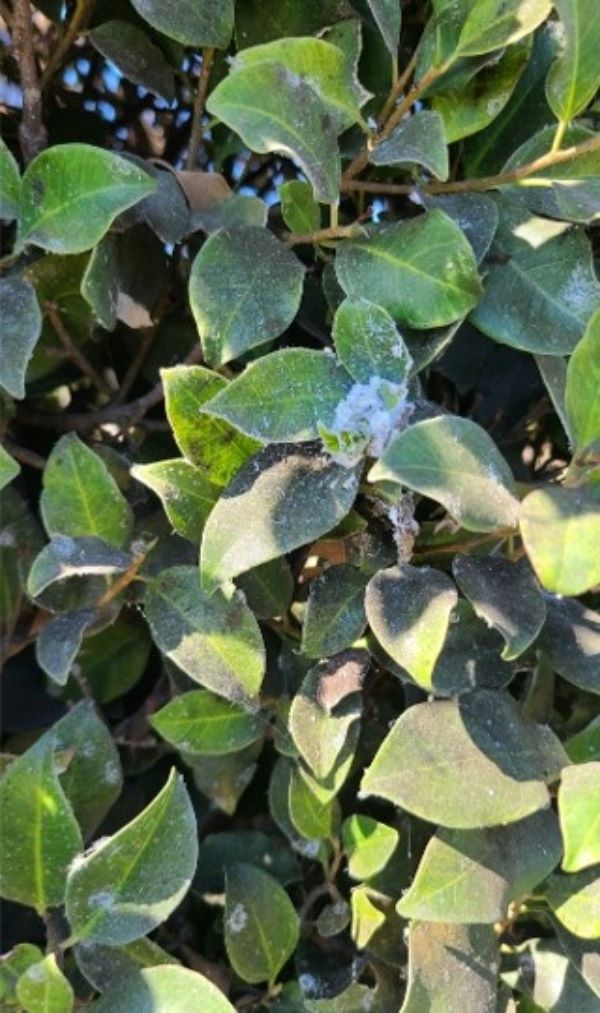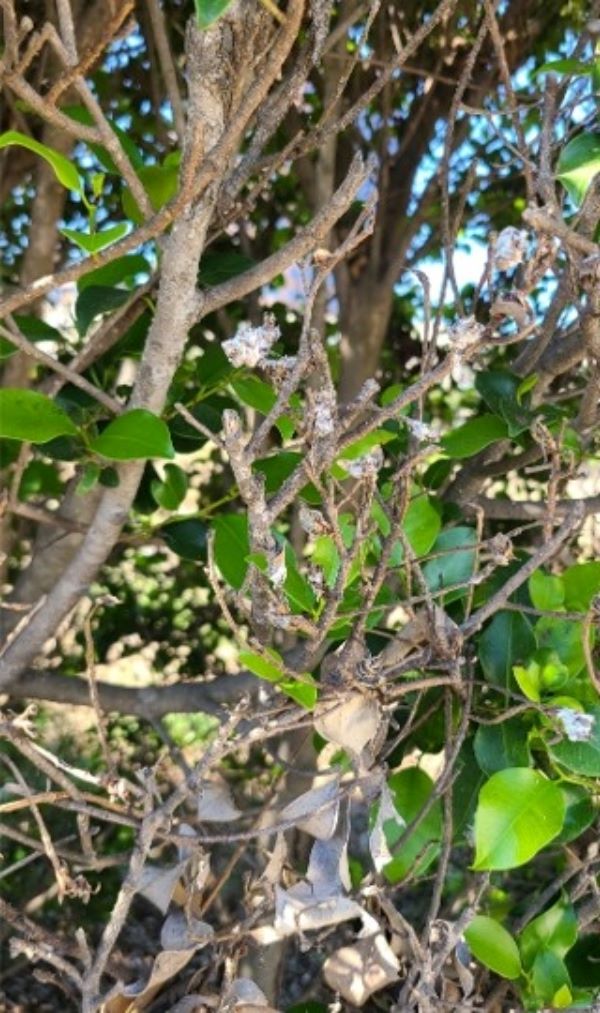The Pest
Ficus Psyllids, also known as Macrohomotoma gladiata (Kuwayama) or “Curtain Fig Psyllid”, is a psyllid that feeds on several varieties of Ficus trees. The psyllids disperse by flying and have high reproductive rates. Ficus psyllids will lay eggs on new leaves and feed on new shoots causing them to be deformed and to stop developing.
The images above show leaves covered in white waxy secretions which can lead to the development of sooty mold
The Ficus Psyllid was discovered in Orange County in 2015 at 4 nurseries and has been found feeding at several residential/commercial properties in the Anaheim area. It is now being found in Orange and San Diego counties.
The USDA gives it a 3 rating on Climate/Host interaction, meaning it is likely to establish a widespread distribution in California. Its current favorite targets are:
As this pest expands its range in California, the impact it may have from an economical and environmental standpoint is significant. When infested plants or leaves are moved this can result in transport of the pest. It can also be passed along via clothing, animals or equipment. The psyllids are ranked as both high reproduction and high dispersal potential.
Management
Monitor, Monitor, Monitor!





